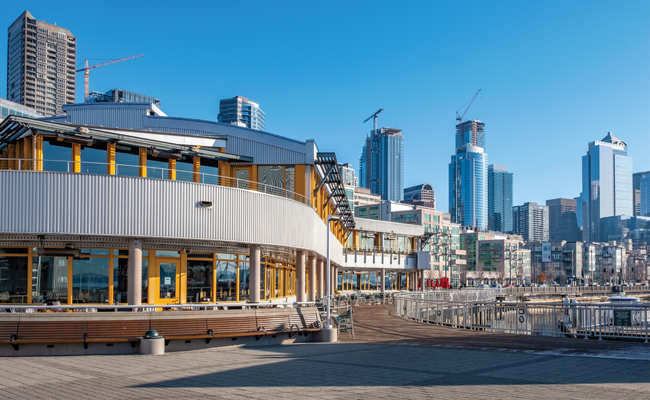In the battle to stop the spread of Covid-19, some states are aggressively combating the contagion with super-powered public policies that are getting results, according to WalletHub, a personal finance website.
The U.S. Center for Disease Control (CDC) says the remedy for stopping the disease is social distancing of at least six feet or more. Many states have taken the CDC’s advice by banning even small gatherings, closing all non-essential businesses, shutting down schools, an ordering residents to shelter in place. But such a cure can damage local and state economies, so not all states are willing to take such drastic measures to win the war against Covid-19, Other states are, though.
To determine which states are the most aggressive in their efforts to limit exposure to coronavirus, WalletHub compared all 50 states and the District of Columbia across three key dimensions: “Prevention & Containment,” “Risk Factors & Infrastructure” and “Economic Impact.” It used 51 metrics graded on a 100-point scale to determine each state’s overall weighted total and ranking.
Here, in ascending order, are the top 10 most aggressive states against the coronavirus.
10. West Virginia
While West Virginia ranks 47th in influenza and pneumonia death rate per capita, it has leapfrogged 22 places from its 32nd overall ranking on March 16th and 21 places from 31st on March 23rd, to 10th on April 6th.

9. New Hampshire
New Hampshire ranks 34th in Economic Impact, but ranks 12th in Risk Factors and Infrastructure, and eighth in Prevention and Containment. New Hampshire’s April 6th overall ranking of ninth is a drop of five places from fourth on March 23rd, but is still an improvement over eleventh on March 16th.

8. Massachusetts
Massachusetts ranks first with the lowest share of population without health-insurance coverage, but fourth in Risk Factors and Infrastructure, 6th in Economic Impact, and 10th in Prevention and Containment. The state soars to an April 6th eighth place ranking overall, up 17 places from its March 23rd ranking of 25th, but just short of its sixth place finish on March 16th.

7. Washington
Washington ranks eleventh in Economic Impact, ninth in Prevention and Containment, and seventh in Risk Factors and Infrastructure. The state advanced to an overall ranking of seventh on April 6th, up 14 places from its overall rank of 21st on March 23rd, but down two places from its fifth place overall ranking of March 16th.

6. Rhode Island
Despite a ranking of 47th in Economic Impact, Rhode Island ranks sixth in Prevention and Containment, and fifth in Risk Factors and Infrastructure. Rhode Island ranked first overall on March 16th, but fell to second on March 23rd and sixth on April 6th.

5. New Jersey
In spite of a 49th ranking in lowest public hospital system quality and 17th in both Economic Impact, and Risk Factors and Infrastructure, New Jersey ranks fourth in Prevention and Containment. The state rises two places from its seventh place overall rank on both March 16th and 23rd, to a current overall rank of fifth on April 6th.

4. Hawaii
Although Hawaii ranks 49th in Economic Impact and 28th in Risk Factors and Infrastructure, the state ranks first in Prevention and Containment. Hawaii took giant steps from its March 16thoverall ranking of 45th, landing at eleventh place on March 23rd, then rising to its current overall rank of fourth on April 6th.

3. Alaska
Alaska ranks 50th with the highest share of population without health insurance coverage, but first with the highest public health-care spending per capita. Alaska rose from an overall rank of 19th on March 16th to 14th on March 23rd, and to its current overall rank of third on April 6th.

2. District of Columbia
While the nation’s capital ranks first in highest public health-care spending per capita, it ranks 50th with the lowest public hospital system quality. After dropping from tenth on March 16th, to an overall rank of 22nd on March 23rd, the District of Columbia bounces back with an April 6th rank of second.

1. New York
With the highest number of COVID-19 hospitalizations and deaths in the country, New York has aggressively battled the disease with every public policy weapon in its arsenal. The state ranks 14th in Economic Impact, 13th in Risk Factors and Infrastructure, and third in Prevention and Containment. After dropping three places from an overall ranking of fourth on March 16th, New York bounces back from seventh on March 23rd to first on April 6th.









